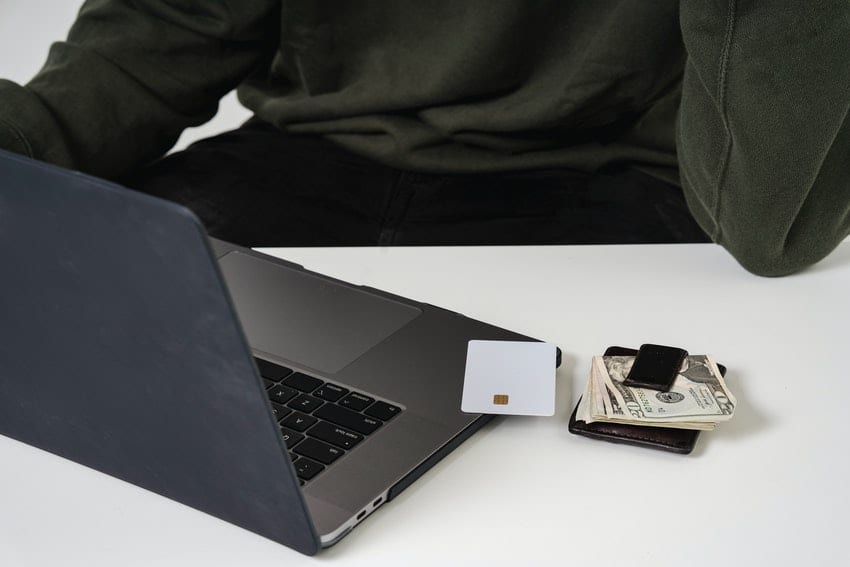Today, it is becoming more and more popular to shop through smartphones. Looking at the structure of e-commerce retail sales, you can see that most of all sales in the US are mobile purchases.

According to the research, 54% of all e-commerce sales will be made through mobile devices in 2021.
For customers to be able to seamlessly make purchases through your website or program, it is vital to have a convenient and secure payment gateway in your program.
After all, as evidenced by the data of various studies, an inconvenient and dangerous payment system forces users to make purchases from your competitors, even if your product is much better.
According to the study, 11% of users abandon their order through a complex checkout system. 12% - if they need to enter too much personal information, 7% - if the list of payment methods is too small and the user cannot find the one he needs, another 14% - if there is no guest payment option on the site or in the program.
But integrating secure payment systems is not a very easy process. There are several factors to consider. Payment gateways must be secure, also include several payment methods, as well as support the ability to pay in multiple currencies.
What Is a Payment Gateway?
Before you learn how to make a secure payment gateway to ensure secure payments, let’s discuss what exactly payment gateways are and why they are so important.
A payment gateway is a technology that collects and transfers data from a client to an acquirer and then sends a notification to the client about the acceptance or rejection of the payment.
A payment gateway process involves verifying the customer's bank card details, ensuring the availability of funds, and allowing the merchant to receive payment for a product or service.
This technology acts as an interface between a merchant's website and its acquirer. Another function of the secure payment gateway is encryption of the confidential data of the client's credit card in order to enable the anonymized transfer of the client’s data to the acquirer.

In simple terms, the secure payment gateway is a virtual analog of a point-of-sale terminal, which we can see every day in different offline stores.
The payment gateway process acts as a middleware between buyer and seller, providing secure payments. Using a secure online payment gateway simplifies the process of implementing the necessary software for merchants several times.
As noted earlier, this technology also manages the user's confidential information, such as bank card number, expiration date, and CVV code.
Why Do Companies Need a Payment Gateway?
But still, why should you use a secure online payment gateway if it only serves as an intermediary? The problem is that secure payments through a website or program do not work the same way as through a terminal in a regular store.
It is impossible to physically swipe a bank card through the terminal, you can only rely on the data of the card that the client enters on the payment page.
But it is impossible to be completely sure that the user’s card is their own. That is why in such secure payments, where it is impossible to provide a physical card, the risk of fraud is very high. In such situations, payment gateways come in handy.
If you do not use a secure payment gateway to flow your online payments, it will be much easier for fraudsters to gain access to your customers' bank card details, which will make your company very vulnerable and cause irreparable damage to your reputation.
By using a secure payment gateway, you can keep your customers' bank card confidential information out of threats. In addition to protecting against fraud, the secure payment gateway also protects merchants from expired cards, insufficient funds, closed accounts, or exceeding credit limits.
How to Make the Payment Gateway Secure and Protected?
Payment gateways must ensure that merchants always receive funds from customers upon purchase and that they do not have to worry about credit risk and the possibility of fraud.
Still, it is almost impossible to completely prevent fraud. Fraudsters always improve their methods, and therefore such a disaster can befall anyone.
But by using a secure payment gateway, you can significantly reduce the possibility of fraud and prevent theft. Below are several ways that you can use to provide secure payment on your website or program.
SSL for Secure Connections
Every transaction that takes place through your company's website or mobile application must be protected by SSL. With the help of SSL, it becomes possible to encrypt the confidential data of your customers' bank cards, which makes this information protected from fraudsters.
The use of such technology not only increases the security of payments but also makes customers more inclined to purchase. SSL is indicated by a padlock icon in the address bar, and web addresses start with HTTPS.
When a user sees such an icon, he understands that he can safely make purchases through your site and not worry about the security of his data.
The secure payment provider you are using must be sure to use HTTPS for all of their services, and therefore you must make sure they also have an SSL certificate.
In addition, you should also regularly check the information about the certification authorities that you or they use. This will help keep your secure payment high.

PCI Certificate
When processing payments on your site, PCI is required. The Payment Card Industry Data Security Standards (PCI DSS) include guidelines that merchants must follow to protect sensitive user data when processing payments. Some of the requirements of this standard include:
- Use validated payment software at the point-of-sale or website shopping cart;
- Do not store sensitive customer data on computers;
- Encrypt transmission of customer data across any open public networks;
- Use a firewall on networks and PCs;
- Teach employees about security measures, such as protecting cardholder data.
One of the best news is that merchants do not have to adhere to and comply with PCI standards. All they have to do is choose the best service provider.
Sellers can leave it up to the payment gateway to follow the industry security standards and provide data encryption, which is required by PCI.
That is why the merchant can be confident in a secure payment gateway if he adheres to these security standards. Thus, payment gateways act as third-party solutions that provide merchants with the latest and greatest security measures they need.
Tokenization
Tokenization replaces all sensitive user data with a set of characters that were randomly generated. The use of this technology significantly reduces the risk of data loss.
One of the best methods is to use a token, which is a real bank card number. After the transaction, the user's confidential data is sent to a special server, where they are securely stored.
Along with this, the seller receives a unique number. Using this number, the client can make purchases on the website or in the program. He does not need to enter all his data again, he can make payment in just one click.
If you use payment gateways with tokenization this will help you minimize the risk of payment fraud. You do not need to store all of your customers' information, that is, the data of their bank and credit cards, on your server.
It is also important that the data is encrypted even before it reaches the database server.
3D Secure Authentication
3D Secure (Three Domain Secure) is a messaging protocol that involves three domains: bank, technology that processes the transaction, and the issuing bank.
This is an additional layer of security that helps prevent fraudulent transactions without a physical bank card. In addition, by using such technology, you automatically transfer responsibility from yourself to the issuing bank.
That is why, when a user wants to purchase on the Internet, he must necessarily confirm the transaction with a generated password, or a one-time PIN, as sent from the bank via SMS. This will help to significantly increase your defense.

Conclusion
It’s worth noting that there are several rules that both sellers and customers should follow to secure their business and carry out secure transactions.
Companies must use all of the methods described above if they want customers to be able to securely purchase their products or services directly through their website or mobile app.
As for customers, they should check the websites on which they make purchases so that their personal information does not get to scammers.
It is also important to enter only the information that is associated with a bank card and in no case send scanned documents or copies of bank cards.
It is usually quite difficult for companies to develop their payment gateway themselves. Today there are many companies involved in financial software development. But not every company can provide quality services and make a truly quality product.
If you consider integrating a secure payment gateway, make sure to work with an experienced software development vendor as Intellectsoft.
We have years of experience helping businesses secure their payment processing and would be glad to work with you on your project. Contact us today and we will discuss your project in all the details.